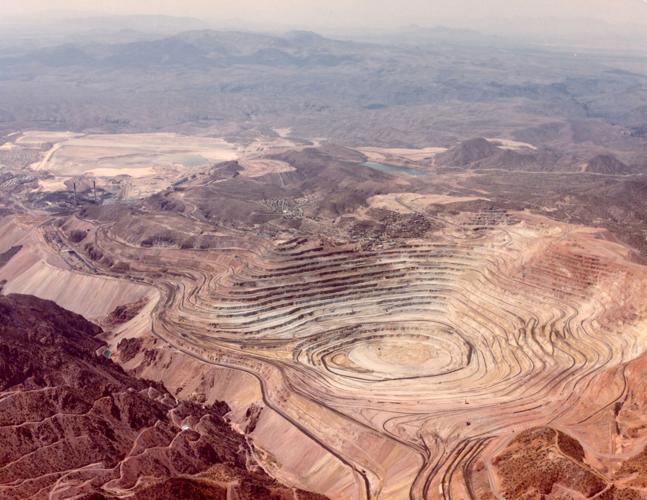The Arizona Transition Zone, sometimes referred to as the Central Highlands, is a northwest-trending belt or escarpment in the middle of the state that separates the Colorado Plateau to the north from the Basin and Range Province to the south.
Originating during the Laramide orogeny, a period of extreme mountain-building dating back 70 million years, the Arizona Transition Zone was uplifted to higher elevations than the Colorado Plateau, though it has subsequently been eroded to its present elevation.
Composed of a mixture of Precambrian rocks (over 500 million years old) and tertiary volcanics, it acquired its name because it includes geologic features similar to both the Colorado Plateau and the Basin and Range Province. Its features include qualities of both the Colorado Plateau and the Basin and Range Province. Examples can be found in the igneous, metamorphic and sedimentary folded and faulted rocks that include flat-lying strata similar to the Colorado Plateau and tilted strata found in the Basin and Range Province.
Formed by heat and pressure, igneous and metamorphic rocks dominate the landscape. As with most of Arizona’s ore deposits formed deep in the Earth, most were formed by intrusions or injections of magma that did not reach the surface, in contrast to extrusions, which reached the surface and were free-flowing. Some geologists believe that the forces of extension and volcanism have slowly eroded the Colorado Plateau, further extending the boundaries of the transition zone.
Northwest-trending valleys separate more than 30 different mountain ranges in the transition zone that include forests composed of ponderosa pine and mixed conifers, a trait characteristic of the Basin and Range Province to the south.
Some of these include Chino Valley, Tonto Basin and the Verde Valley, along with the Mazatzal, Pinal, Santa Maria and White mountains. The Mazatzal Mountains produced large quantities of mercury in the early 1900s.
Other features include the Black Hills near Jerome and Prescott, the Salt River Canyon between Show Low and Globe, and the Sierra Ancha Mountains around Roosevelt Lake. The transition zone is 43 to 50 miles wide in Central Arizona, extending northwest-southeast.
A combination of metamorphism, heat, water and pressure impacted the limestone rocks in the transition zone, resulting in the intense mineralization found in many of the well-known copper deposits of Clifton-Morenci, Jerome, Globe-Miami, and Superior.
It also includes the Bradshaw Mountains, considered to be the richest mineralized zone in the state, having yielded over 150,000 ounces of gold.
Mining localities in and around these mountains include Rich Hill, Potato Patch, Stanton, Lynx Lake and Bumble Bee. It contains an area known as the Central Arizona Highlands, sometimes known as the Mogollon Highlands, consisting of long stretches of mountainous, rugged, and at times inhospitable terrain formed by the collision of geologic plates, causing a series of thrust faults and uplifts that formed the Black, Mazatzal and Sierra Ancha mountains along with the Tonto Basin and Chino and Verde valleys.
Some of the principal rocks that make up the transition zone are basalt, granite, aplite, rhyolite and limestone. Chief mineral commodities of the transition zone include copper, silver, gold, lead, mercury and asbestos. Uranium, also found in this province, is located in the Precambrian Dripping Spring quartzite.





